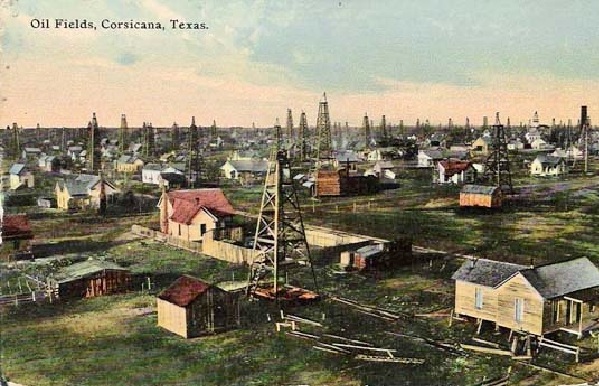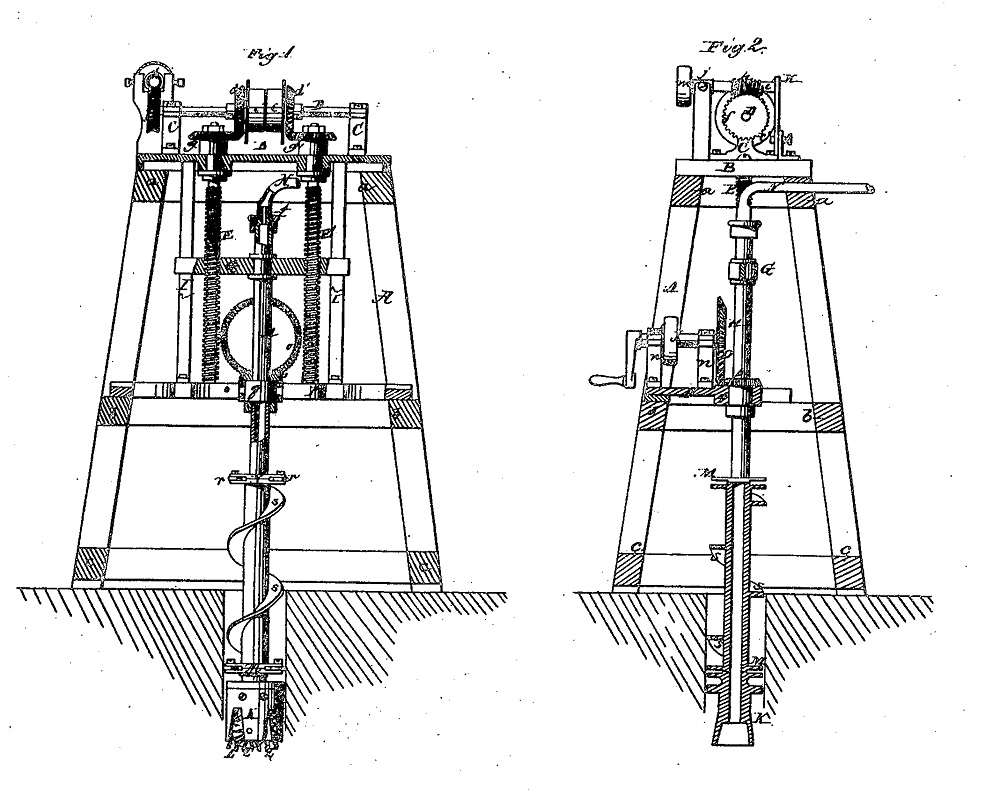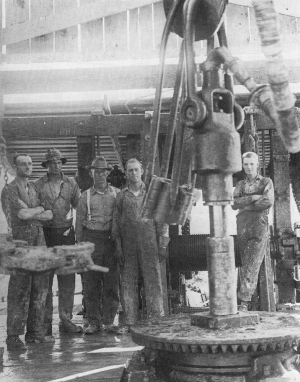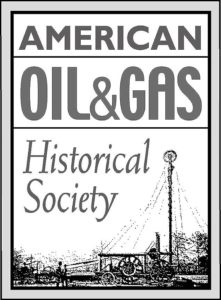This Week in Petroleum History: August 4 – 10
August 4, 1913 – Discovery of Oklahoma’s “Poor Man’s Field” –
The Crystal Oil Company completed its Wirt Franklin No. 1 well 20 miles northwest of Ardmore, Oklahoma. The wildcat well revealed the giant Healdton field, which became known as “the poor man’s field” because of its shallow depth and low cost of drilling. The area attracted many independent producers with limited financial backing.
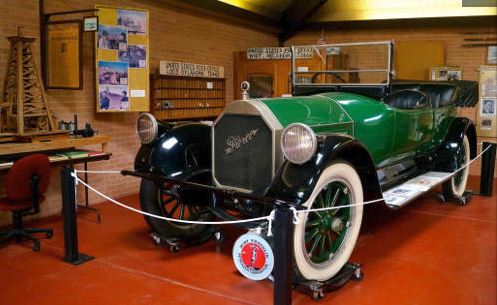
Healdton Oil Museum exhibits include the 1920 Pierce-Arrow owned by Wirt Franklin, who in 1929 founded a national trade association of independent oil and natural gas producers.
Another oil discovery in 1919 revealed the Hewitt field, which extended production 22 miles across Carter County. The Greater Healdton-Hewitt oilfield produced “an astounding 320,753,000 barrels of crude by the close of the first half of the 20th century,” noted Kenny Franks in his 1989 book, Ragtown: A History of the Greater Healdton-Hewitt Oil Field.
A young Erle P. Halliburton perfected a new method of cementing oil wells in “the poor man’s field” (see Halliburton and the Healdton Oilfield). Wirt Franklin of Ardmore became the first president of the then Tulsa-based Independent Petroleum Association of America (IPAA) in 1929.
August 4, 1977 – U.S. Department of Energy established
President Jimmy Carter signed the Department of Energy Organization Act, establishing the twelfth cabinet-level department by consolidating a dozen federal agencies and energy programs. The Act combined the Federal Energy Administration and the Energy Research and Development Administration, making the new Department of Energy (DOE) responsible for nuclear weapon programs and national labs. James Schlesinger was sworn in as the first Secretary of Energy.
August 5, 1882 – Rockefeller founds Standard Oil of New Jersey
Twelve years after launching Standard Oil Company of Ohio (bp America), John D. Rockefeller founded the Standard Oil Company of New Jersey (ExxonMobil) as a refining and marketing arm of the Standard Oil Trust, which would reorganize as Standard Oil Interests in 1892, two years after the Sherman Anti-Trust Act.
“Taking advantage of New Jersey laws that allowed corporations to own stock in other corporations, Standard Oil Company of New Jersey became a holding company that effectively replaced the Standard Oil Trust. In this capacity, it provided administrative coordination to Standard Oil Interests and held stock in forty-one other oil companies,” notes the American Heritage Center, University of Wyoming. The U.S. Supreme Court in 1911 ordered Standard Oil of New Jersey to separate from its subsidiaries.
August 7, 1933 – Permian Basin inspires “Alley Oop” Comic Strip
Although the comic strip “Alley Oop” began syndication with the Newspaper Enterprise Association, the caveman character began in Permian Basin oilfields of the 1920s. A small, West Texas oil town would proclaim itself the inspiration for cartoonist Victor Hamlin.
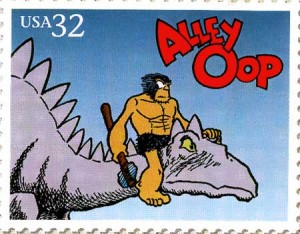
A 1995 stamp commemorated “Alley Oop” by Victor Hamlin, who once worked in oilfields at Yates, Texas.
Iraan (pronounced eye-rah-ann) began as a company town following the October 1926 discovery of the giant Yates oilfield. The town’s name combined the names of Ira and Ann Yates. As petroleum drilling in the Permian Basin boomed, future Alley Oop cartoonist Hamlin worked as an oil company cartographer. He developed a lifelong interest in geology and paleontology that helped inspire his popular Depression Era comic strip.
Learn more in Alley Oop’s Oil Roots.
August 7, 1953 – Outer Continental Shelf Lands Act generates Revenue
The Outer Continental Shelf Lands Act designated the Secretary of the Interior responsible for the administration of mineral exploration and development of America’s outer continental shelf. Forty-four Gulf of Mexico wells were already operating in 11 oilfields by 1949. As the offshore industry evolved in the 1950s, petroleum production became the second-largest revenue generator for the country, after income taxes.
Since 1982, the Interior Department has disbursed more than $387 billion in mineral leasing revenues. The Office of Natural Resources Revenue (ONRR ) in 2024 reported a disbursement of $16.45 billion (down from $18.24 billion in 2023) generated from energy production on federal and Tribal lands and federal offshore areas. Monthly disbursements came from the royalties, rents, and bonuses collected from energy and mineral companies operating on federal lands and waters.
August 7, 2004 – Death of a Famed “Hellfighter”
Famed oilfield well control expert and firefighter Paul “Red” Adair died at age 89 in Houston. The son of a blacksmith, Adair was born in 1915 in Houston. He served with a U.S. Army bomb disposal unit during World War II.
Adair had begun his oilfield career working for Myron Macy Kinley, who patented a technology for using charges of high explosives to snuff out well fires. Kinley, whose father had been an oil well shooter in California in the early 1900s, mentored many other firefighters, including Asger “Boots” Hansen and Edward “Coots” Mathews (Boots & Coots International Well Control).
After founding the Red Adair Company in 1959, Adair developed new techniques as his company extinguished over 2,000 well fires worldwide, onshore and offshore. The oilfield firefighter’s skills, dramatized in the 1968 film “Hellfighters,” were put to the test in 1991, when his company extinguished 117 well fires set in Kuwait by the retreating Iraqi army. Innovative oilfield firefighting technologies began as early as the 1860s.
August 9, 1921 – Reflection Seismography reveals Geological Structure
A team led by University of Oklahoma geophysicist John C. Karcher conducted the world’s first reflection seismograph measurement of a geologic formation, pioneering the use of reflection seismic technology. The geological section measurement followed limited tests in June and July at Oklahoma City. His work led to the discovery of many of the world’s largest oil and natural gas fields.
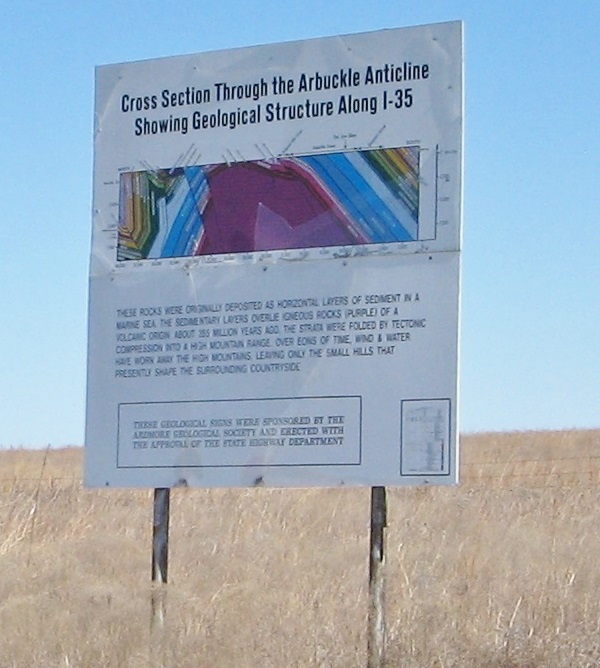
A roadside sign on I-35 south of Oklahoma City includes a geologic illustration of the Arbuckle Anticline. A nearby marker describes how using reflection seismography for oil exploration began here. Photo by Bruce Wells.
The new geophysical method recorded reflected seismic waves as they traveled through the earth, helping to define oil-bearing formations. The Arbuckle Mountains of Oklahoma were selected for testing the technique and new equipment, according to a roadside marker at the site south of Oklahoma City on I-35.
Learn More in Exploring Seismic Waves.
August 9, 1922 – Giant Oilfield revealed in Luling, Texas
After drilling six dry holes near Luling, Texas, the United North & South Oil Company completed its Rafael Rios No. 1 well. Company President Edgar B. Davis remained determined to find oil in the Austin chalk geologic formation. His perseverance paid off with an oilfield 12 miles long and two miles wide. The Luling field annually produced 11 million barrels of oil by 1924.
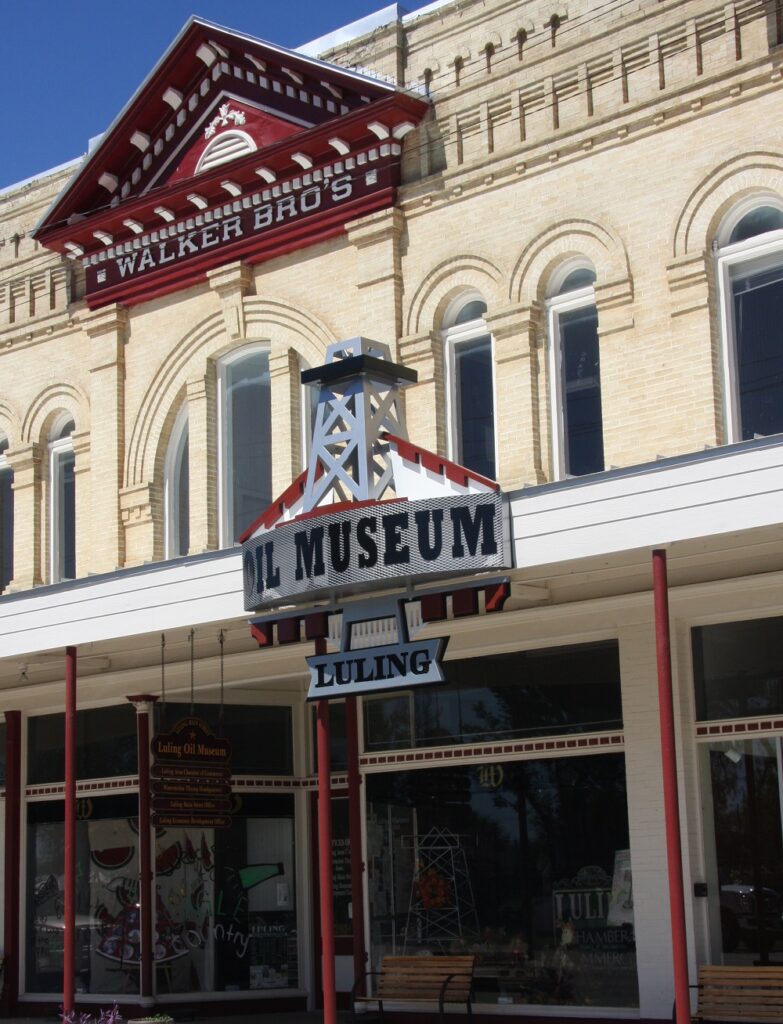
The Luling Oil Museum in central Texas is in a restored 1885 mercantile store near the 1922 oilfield a psychic claimed to help discover. Photo courtesy Luling Oil Museum.
On June 11, 1926, Davis sold his Luling leases to the Magnolia Petroleum Company for $12 million – the largest petroleum deal in Texas at the time. Success also produced local tales of Davis finding the Luling oilfield after consulting a psychic. Self-proclaimed clairvoyant Edgar Cayce reported he had helped Davis, but the psychic formed an exploration company that failed after drilling dry holes.
Learn more in Luling Oil Museum and Crudoleum.
On August 9, 1949 – Oil discovered in Western Nebraska
An oilfield discovery in western Nebraska ended decades of unsuccessful searching and helped start the state’s modern petroleum industry. The Marathon Oil Company Mary Egging No. 1 well, five miles southeast of the town of Gurley, produced 225 barrels of oil per day from a depth of 4,429 feet.
According to a nearby historical marker, the first exploratory well drilled in the area near Harrisburg failed in 1917. The success in western Nebraska came nine years after the first Nebraska oil well was completed in 1940 in the southeastern corner of the state.
Marathon Oil in May 2024 announced it was being acquired by ConocoPhillips in an all-stock transaction valued at $22.5 billion.
August 10, 1909 – Hughes patents Two-Cone Drill Bit
“Fishtail” drill bits became obsolete after Howard Hughes Sr. of Houston, Texas, patented the dual-cone roller bit with two rotating cones. By pulverizing hard rock, his bit led to faster and deeper rotary drilling. A few months before receiving the 1909 drill patent, Hughes and Walter Sharp established the manufacturing company Sharp-Hughes Tool (see Carl Baker and Howard Hughes).
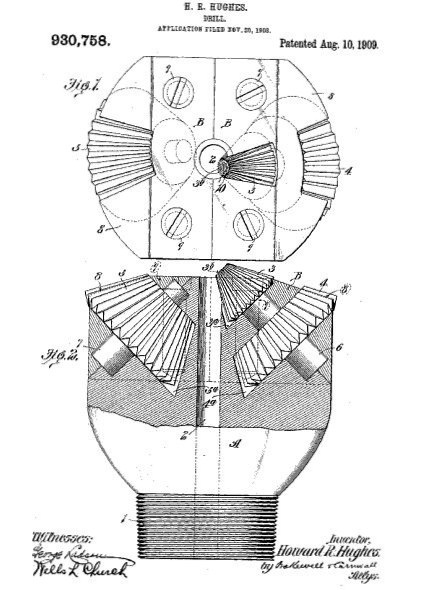
Howard Hughes Sr. of Houston, Texas, received a 1909 patent for “roller drills such as are used for drilling holes in earth and rock.”
“Instead of scraping the rock, as does the fishtail bit, the Hughes bit, with its two conical cutters, took a different engineering approach,” reported the American Society of Mechanical Engineers (ASME). “By chipping, crushing, and powdering hard rock formations, the Hughes Two-Cone Drill Bit could reach vast amounts of oil in reservoirs thousands of feet below the surface. This new drilling technology would revolutionize the industry.”
In 1933, Hughes engineers invented the modern tri-cone bit; Frank and George Christensen developed the earliest diamond bit in 1941; and tungsten-carbide bits arrived in the early 1950s. By the 1970s, synthetic diamonds evolved into the polycrystalline diamond compact bit. ASME in 2009 designated the Hughes two-cone drill bit a Historic Mechanical Engineering Landmark (no. 246).
Learn more in Making Hole – Drilling Technology.
_______________________
Recommended Reading: Ragtown: A History of the Greater Healdton-Hewitt Oil Field (1989); The New Map: Energy, Climate, and the Clash of Nations (1999); Titan: The Life of John D. Rockefeller, Sr.
(2004); Yates: A family, A Company, and Some Cornfield Geology
(2000); An American Hero: The Red Adair Story
(1990); Oil And Gas In Oklahoma: Petroleum Geology In Oklahoma
(2013); Texas Art and a Wildcatter’s Dream: Edgar B. Davis and the San Antonio Art League
(1998); Drilling Technology in Nontechnical Language
(2012). Your Amazon purchase benefits the American Oil & Gas Historical Society. As an Amazon Associate, AOGHS earns a commission from qualifying purchases.
_______________________
The American Oil & Gas Historical Society (AOGHS) preserves U.S. petroleum history. Please become an annual AOGHS supporter and help maintain this energy education website and expand historical research. For more information, contact bawells@aoghs.org. © 2025 Bruce A. Wells. All rights reserved.




